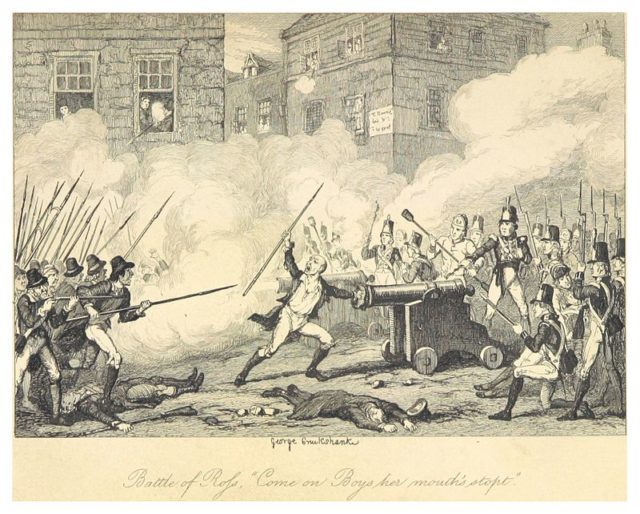After the Battle of New Ross in 1798, an ancient blade was pried from the hands of a lifeless rebel soldier. The mysterious warrior had gone to war, not with an iron pike like most of his comrades, but with a weapon considerably older. He perished grasping a weapon not witnessed on the battlefield for more than 2,500 years: a Late Bronze Age sword.
In the summer of 1798, County Wexford experienced a large rebellion against British rule. Guided by the United Irish Men, an enormous peasant army marched through the county, seizing first the towns of Wexford and Enniscorthy. Afterward, they stormed the riverside harbor of New Ross, where a large battle was fought.

On the daybreak on the 5th of June, the rebel army stormed the town’s defenses. Equipped primarily with pikes, they were greeted with cannon fire, musket, and grape-shots. It caused destruction among their ranks. The fighting went on for the best part of a day and was tremendously gory,; historians suggest that almost 3,000 men were slain in battle. By twilight, the insurgents were in full retreat, and the roads of New Ross were littered with bodies. In the following days, as the bodies of the deceased warriors were collected, the rare weapon was recovered from one of the dead rebels.

This leaf-shaped blade was in extraordinarily good condition for a 2,500-year-old weapon. The only alteration the rebel warrior had made to the sword, to prepare it for combat again, was to add a rough leather handgrip attached by iron rivets. Over 400 comparable Late Bronze Age swords have been discovered in Ireland, the vast majority being recovered from wet environments such as bogs, lakes, or rivers. Regrettably, the original home of the New Ross sword remains unidentified, as does the identity of its last owner. The sword itself is now featured in the Royal Ontario Museum in Canada.
